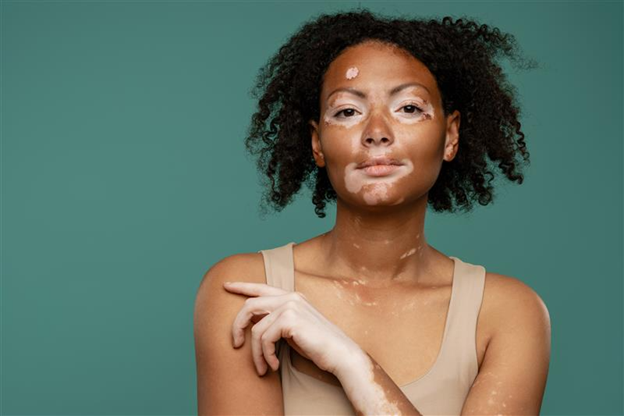Vitiligo is a skin condition that affects many people worldwide. It’s more common than most realize, yet often misunderstood. The condition causes loss of skin color in patches. Raising awareness is vital to break down myths and misconceptions about vitiligo. Many still mistakenly believe it affects a person’s health beyond skin appearance. Education can promote empathy and support for those affected.
What is Vitiligo? An In-Depth Look
Vitiligo occurs when skin loses pigment cells, leading to lighter patches. It exists in two main types: non-segmental and segmental. Non-segmental is common and affects both body sides. Segmental typically appears in areas like hands and face, spreading differently.
Some think the condition’s contagious or affects overall health—it doesn’t. Vitiligo only involves appearance changes and not physical well-being. Misunderstandings can lead to unfair treatment. Clarifying facts helps reduce stigma and aids those impacted in feeling accepted. Knowing the real nature of vitiligo is fundamental to supporting awareness and inclusion.
Exploring the Causes and Risk Factors
The exact cause of vitiligo is not fully understood. However, it’s often linked to autoimmune responses where the body’s self-defense system mistakenly attacks its pigment cells. Additionally, genetic predispositions might increase someone’s likelihood of developing vitiligo. If family members have it, chances might be higher. But it’s not purely a genetic condition.
External factors, like stress and chemical exposure, are also suspected causes. Stressful events might trigger or worsen symptoms in those predisposed. Some chemicals used in dyes or cosmetics are linked with vitiligo, though their role isn’t entirely clear. Despite myths, vitiligo isn’t contagious. It can’t spread from one person to another by touch or proximity.
Recognizing Symptoms and Getting an Accurate Diagnosis
White spots, the main symptom of vitiligo, often appear on hands, face, and joints. These light patches can be small or spread over large skin areas. Finding a healthcare professional is crucial for diagnosis. They use examinations, like UV light checks, to ensure accurate evaluation. Timely diagnosis aids in managing the condition early on. Avoid assumptions and seek expert advice for proper guidance.
Comprehensive Treatment Options for Vitiligo
There are several treatment options for white spots on skin caused by vitiligo. Topical treatments like corticosteroids can help regain some pigment. For immune system-related factors, JAK inhibitors might be prescribed.
Another popular option is light therapy. Narrowband UVB therapy is a common method. It uses UV light to stimulate pigmentation. Excimer lasers target specific spots, offering precision treatment. Some patients might consider oral medications; these work from within the body to address pigment loss.
Surgical options are another avenue. Procedures like melanocyte-keratinocyte transplant can restore color. This involves transferring pigment cells to affected areas. For those with extensive vitiligo, depigmentation might be an alternative. It lightens unaffected skin to match the patches.
When exploring options, discuss with professionals to understand benefits and risks. Vitiligo cosmetic treatments offer aesthetic improvements but no cure. Vitiligo management varies per individual, thus personalized plans are recommended.
Debunking Myths: Cosmetic Treatments and More
Vitiligo cosmetic treatment can help manage appearance but results vary. Patience and realistic expectations are key. These treatments focus on covering lighter spots with makeup or dyes. They can boost confidence in social settings.
It’s also crucial to embrace a suitable skincare routine. Use gentle, moisturizing products and apply SPF for sun protection. Sunburn can worsen vitiligo patches.
Believing all myths surrounding vitiligo hinders understanding. Encourage open-mindedness and an informed approach to discussing the condition.
Managing Vitiligo with Diet and Lifestyle Choices
Adjustments in diet and lifestyle can impact vitiligo management. While no diet causes or cures vitiligo, balanced nutrition supports skin health. Foods rich in antioxidants and vitamins, like fruits and leafy greens, can benefit the skin.
Lifestyle tweaks sometimes help manage stress, a potential trigger. Activities like yoga or meditation can lower stress levels.
Early diagnosis and routine check-ups aid vitiligo management. Tracking changes allows timely treatment adjustments and improved outcomes. Advocating proactive habits supports overall well-being.

